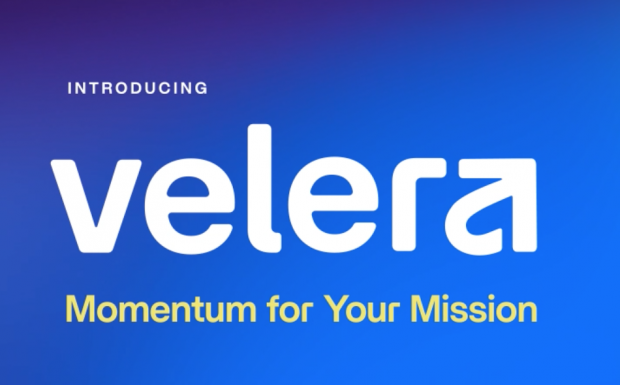ST. PAUL, Minn. – Despite having a successful indirect lending program which as recently as a year ago generated about $30 million a month in auto loans for the CU, Affinity Plus FCU has opted to discontinue its indirect lending program and its relationship with a network of auto dealers in favor of direct financing for members purchasing an auto. Elizabeth Hayes, SVP of corporate development for Affinity Plus – the third largest CU in Minnesota – said the credit union's decision was driven by strategic considerations, rather than profit ones. She explained that Affinity Plus decided to restructure its program because "it became clear to us that the financing practices at many dealers were not in line with our organization's strategy of building relationships founded on trust. The success of our strategy involves active conversations and understanding our members' needs and objectives, and the dealer in the middle became an obstacle to our relationship-building efforts. "Our ultimate goal is to allow our members to define their relationship with us, and this decision opens up a world of opportunity for them. For those members who prefer to finance their auto purchase at the dealer, we have developed an opportunity to proactively contact them and find out how we can better serve their needs before they shop for a car." Affinity Plus President/CEO Kyle Markland added that, "The CU's indirect lending program had become a major source of member growth. However these new members saw Affinity Plus strictly as a finance company for their vehicle rather than a full-service financial institution." Markland said that behavior is "contrary to our corporate-wide strategic goal of building long term relationships with our members.we feel that it is in our members' best interest to focus on their goals and needs, rather than simply generating loans for profits' sake alone. Indirect lending couldn't support our strategy. It evolved from being a member centered channel to a member and loan growth channel." Affinity Plus FCU has more than 120,000 members. In the first quarter 2004, according to NCUA 5300 call reports, Affinity Plus financed 9,971 new auto loans worth $143.4 million, and 26,703 used auto loans worth $252.0 million. Indirect auto loans accounted for less than half of its total loan portfolio and less than 25% of its total loan portfolio. The credit union was involved with indirect lending for 10 years, and its dealer network included 100 dealerships throughout Minnesota – Affinity Plus' FOM includes the entire state. But despite the length of time Affinity Plus was involved with indirect lending, once the CU made its decision it set the ball in motion. Starting about 18 months ago, the CU began weaning itself away from indirect lending, lessening its reliance on that channel and tried to go more direct, focusing on its core strategy of dealing with its members and building relationships with them. In the heydey of its indirect lending, Markland said the CU gained 10,000-12,000 members annually through indirect channel. Now he said about 40-60 new members a month join Affinity Plus as a result of indirect lending. About a year ago, the credit union changed its auto loan price structure that gave current members lower loan rates than new members who came in to the CU through indirect lending. Markland emphasized that while Affinity Plus' indirect loan growth has slowed, its direct channel volume has increased. He said the credit union is still going to annualize out between 12-15% total loan growth including a net decrease in indirect lending. Tony Boutelle, president/CEO, Credit Union Direct Lending understands the condition that prompted Affinity Plus to make its auto lending strategy decision, and he admits trying to cross-sell new members who join a credit union as a result of a CU's indirect loan program "has been a challenge. People go to a dealership to get a car, not to get a credit union," he says. Boutelle said about 90% of auto loans are originated at the dealership site, so the idea is to make the dealership almost become an extension of the credit union by using technology. If the new member isn't located near a credit union branch, the potential of the CU getting them to use other services is small unless the CU has a lot of online services, Boutelle opines. Among the successful strategies some credit unions with indirect lending have used to cross-sell members is calling the member on the phone and trying to get them to the CU's Web site. Another idea is to give the new member some sort of coupon or other incentive to get them to come to the branch and meet a service representative. "Simply mailing pieces to the new member doesn't work," says Boutelle. "The person doesn't associate the credit union name with the financial institution even if that's where they have their auto loan." Despite being president/CEO of CUDL and an advocate of indirect lending, Boutelle says there's a lot of opportunity for credit unions to do direct loans. Credit unions should just make sure all the auto lending channels are available to members, he says. -
|Complete your profile to continue reading and get FREE access to CUTimes.com, part of your ALM digital membership.
Your access to unlimited CUTimes.com content isn’t changing.
Once you are an ALM digital member, you’ll receive:
- Critical CUTimes.com information including comprehensive product and service provider listings via the Marketplace Directory, CU Careers, resources from industry leaders, webcasts, and breaking news, analysis and more with our informative Newsletters.
- Exclusive discounts on ALM and CU Times events.
- Access to other award-winning ALM websites including Law.com and GlobeSt.com.
Already have an account? Sign In
© 2024 ALM Global, LLC, All Rights Reserved. Request academic re-use from www.copyright.com. All other uses, submit a request to [email protected]. For more information visit Asset & Logo Licensing.









